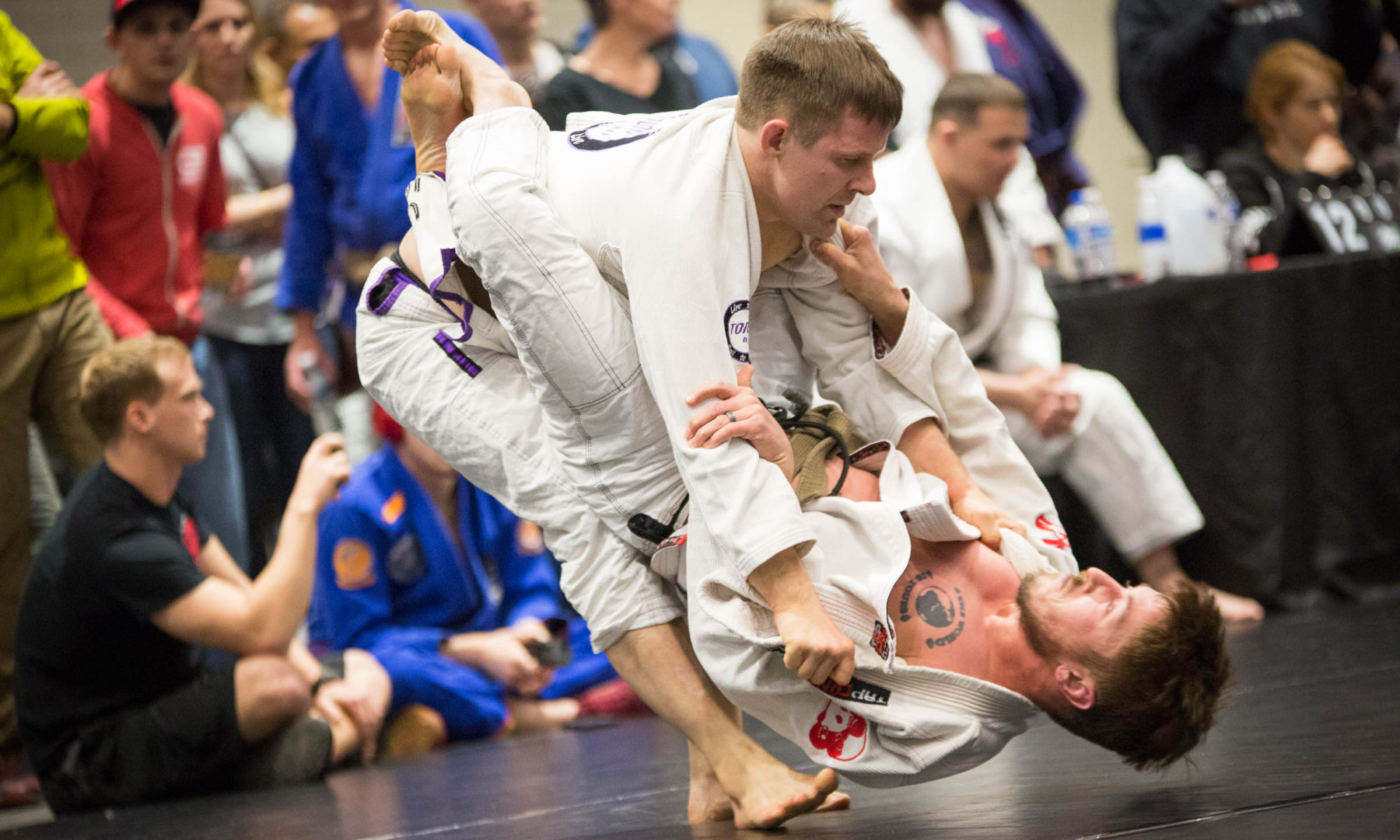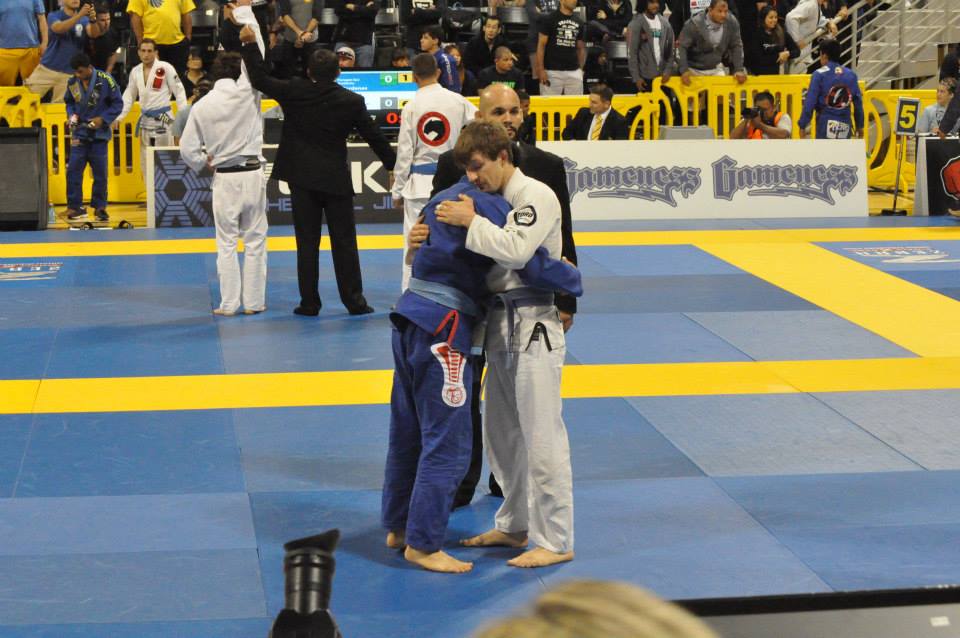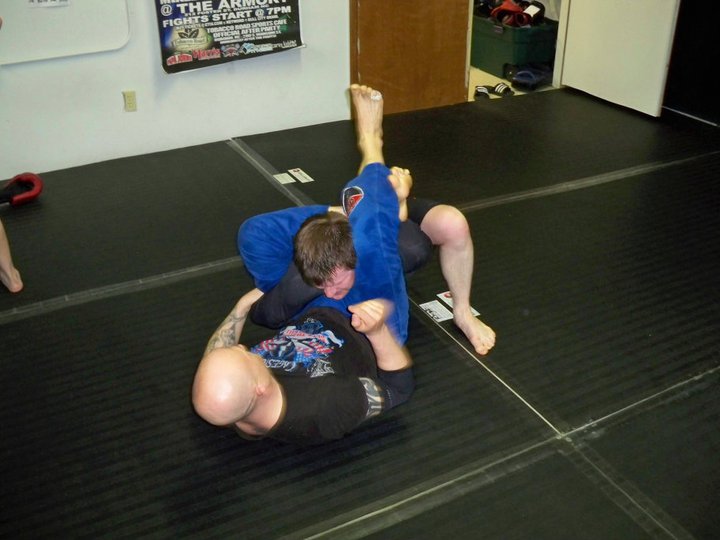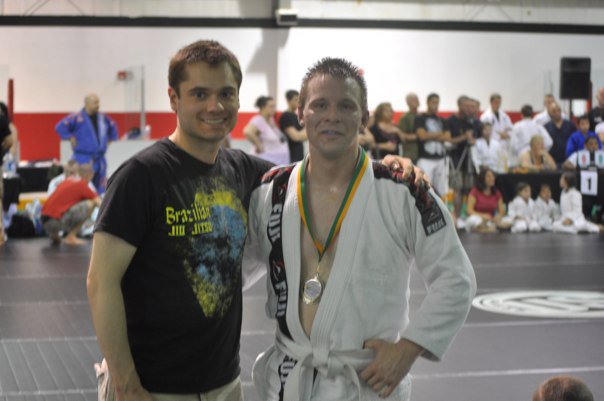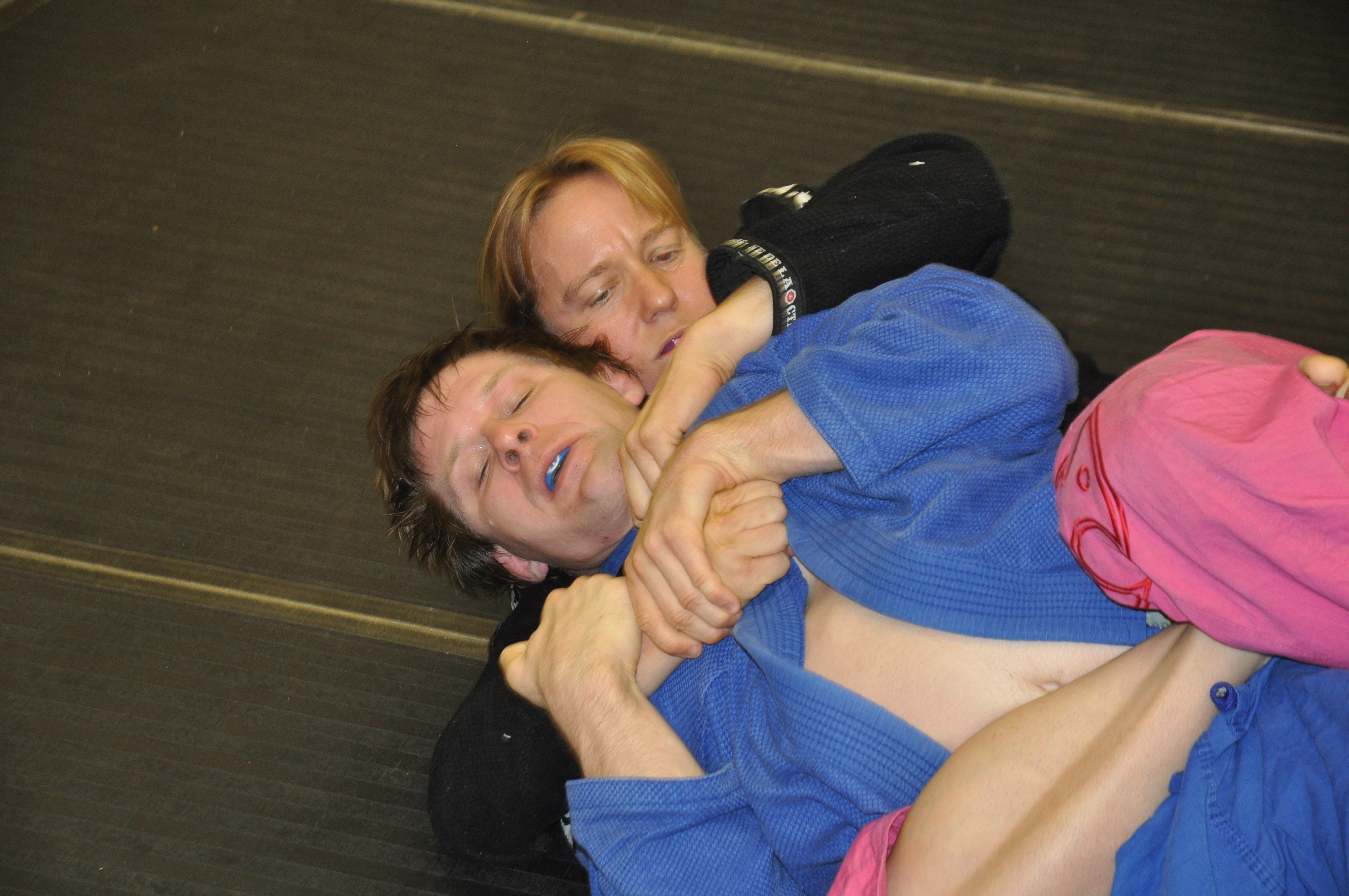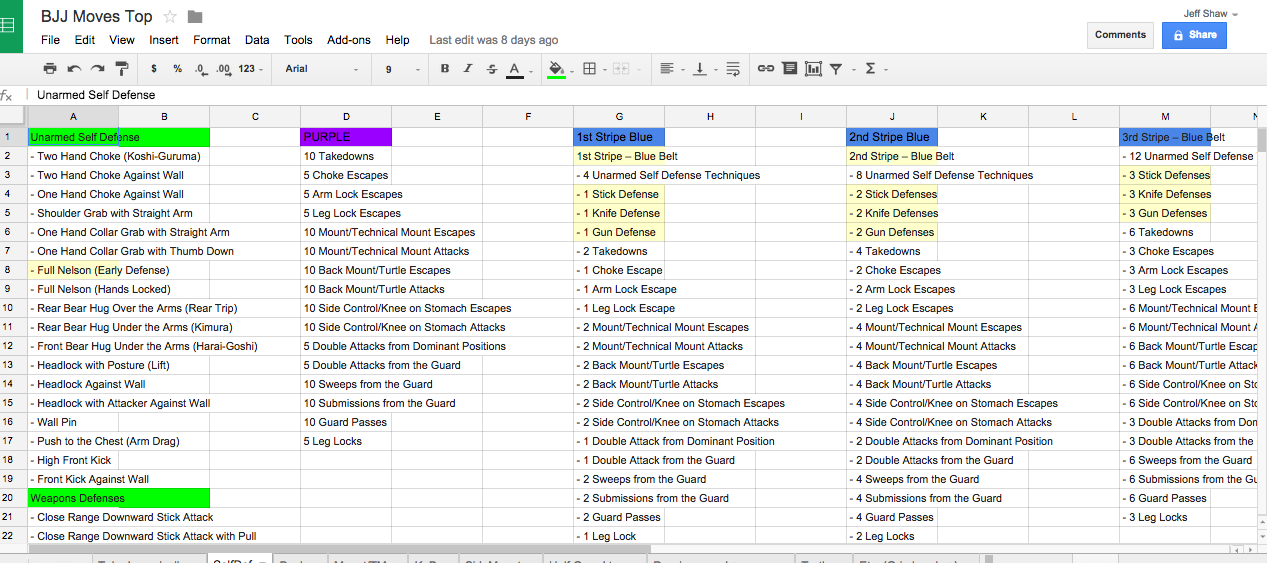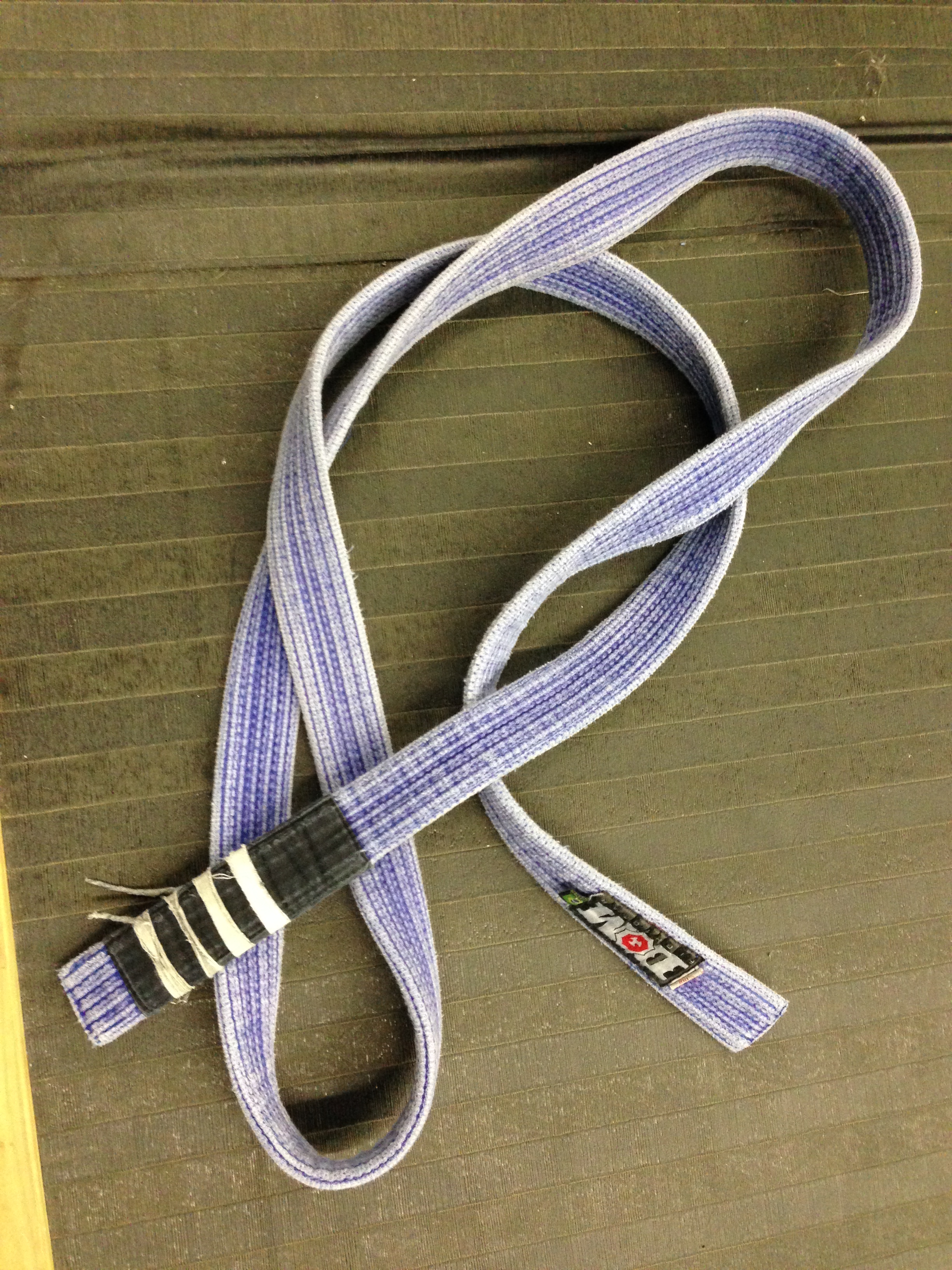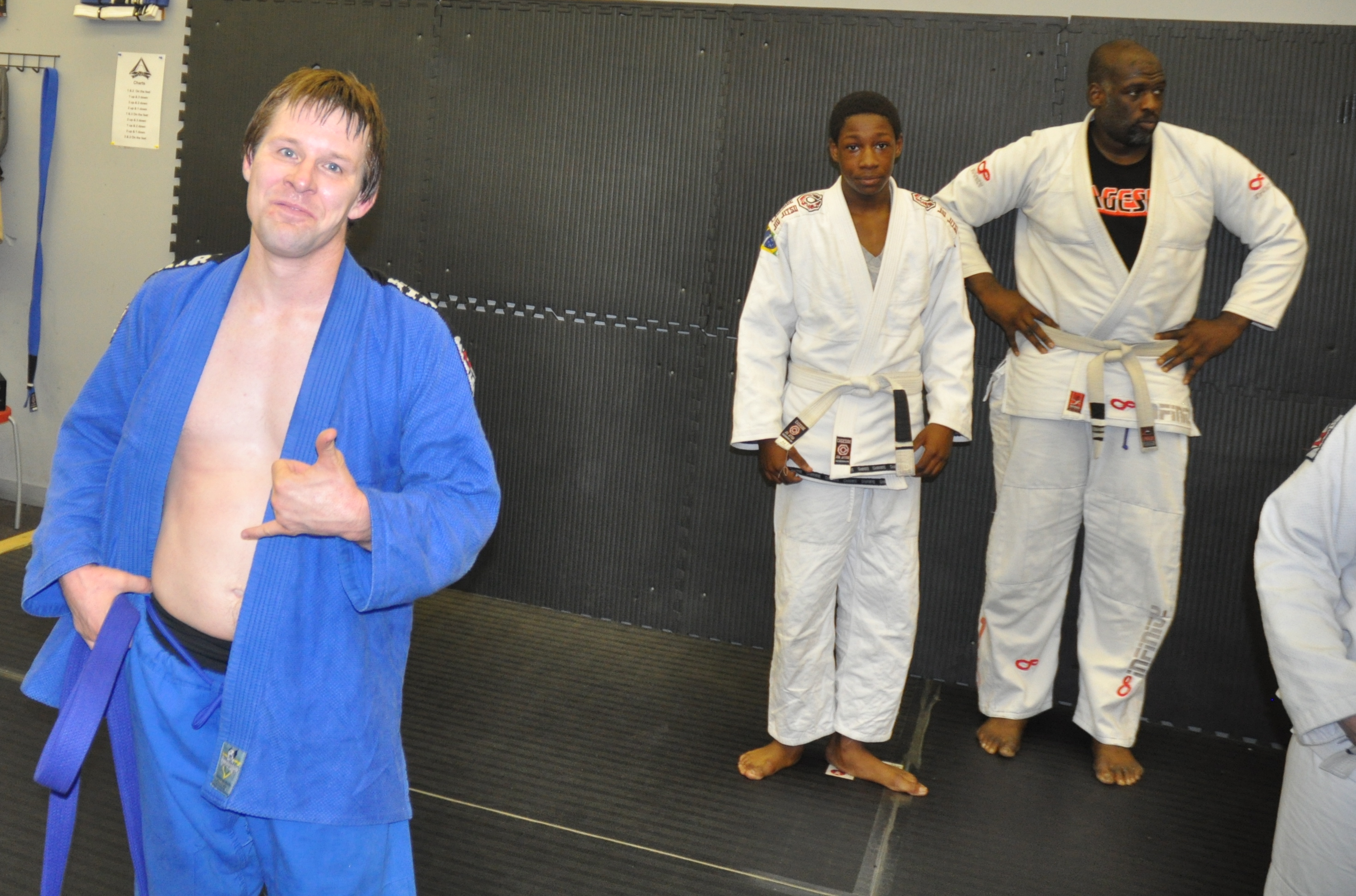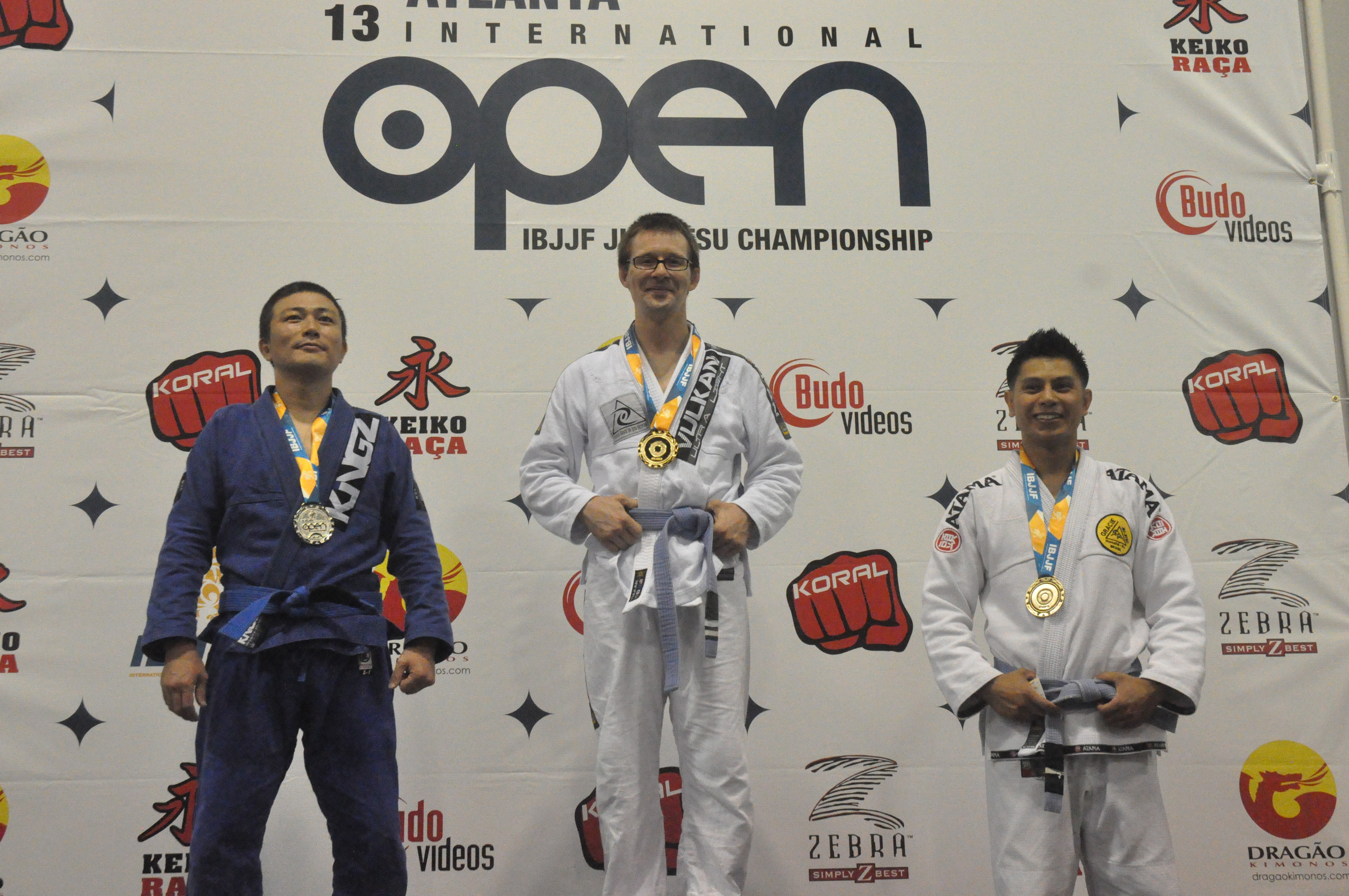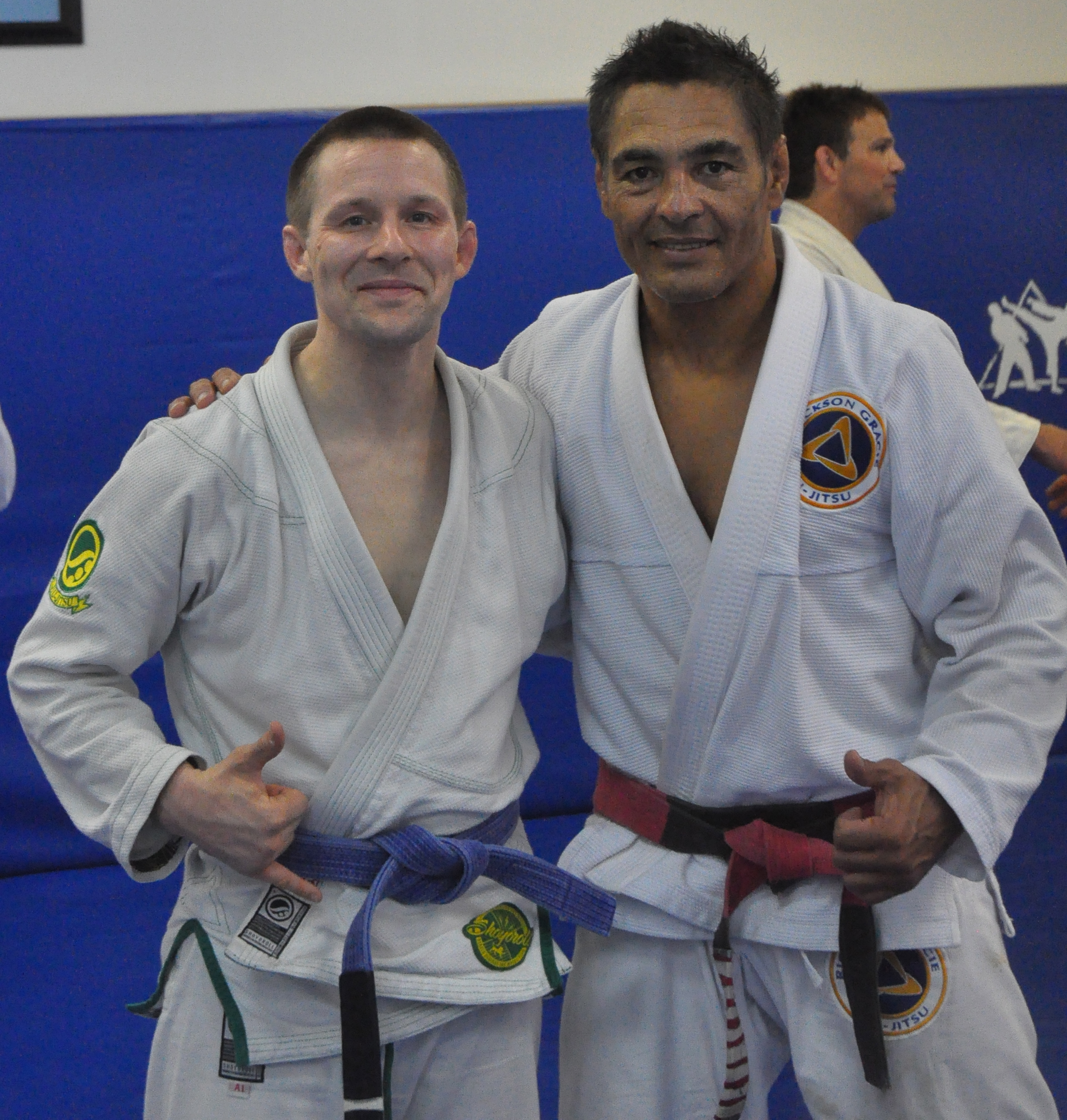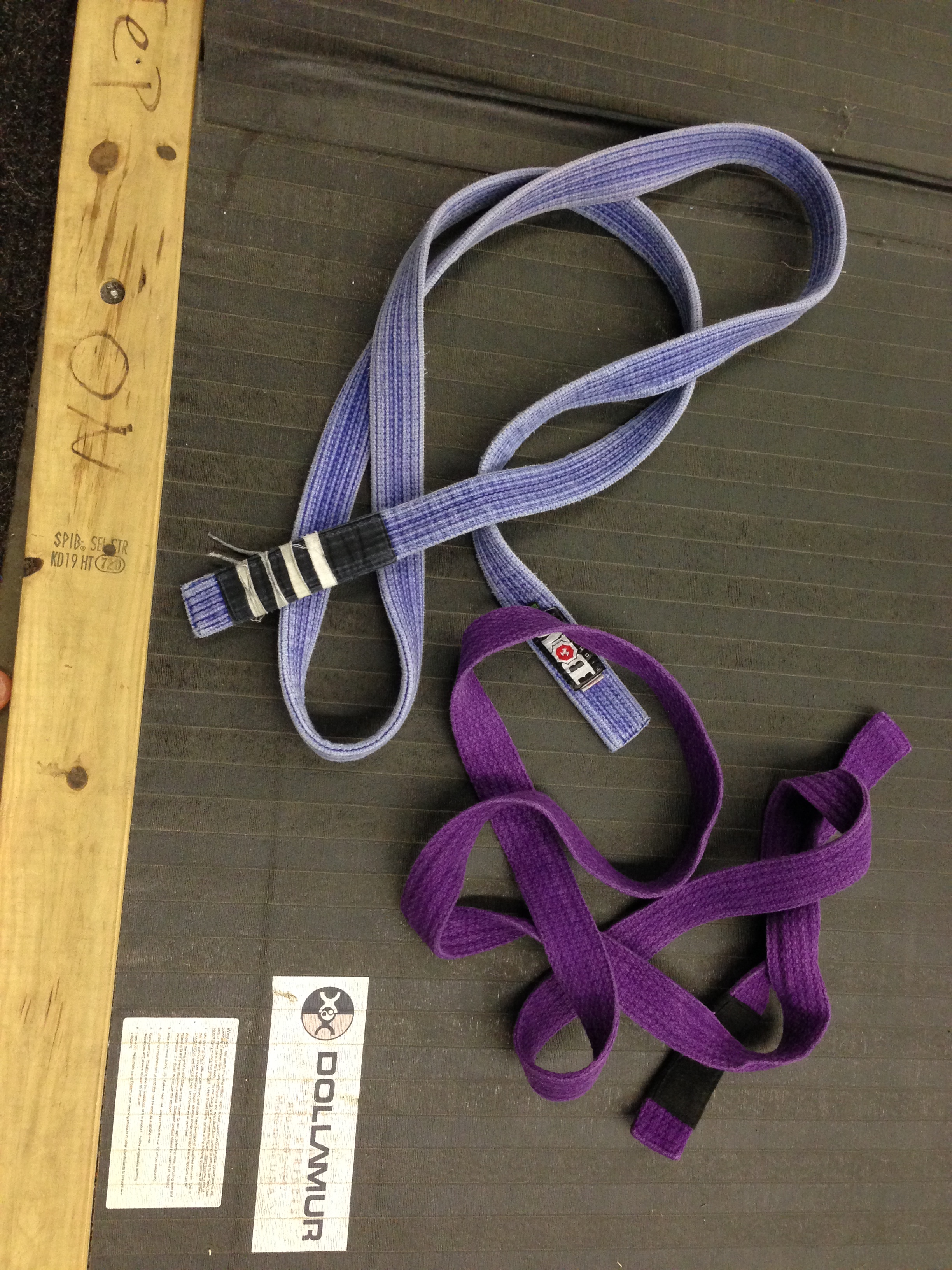Who is more successful, the single guy who has a billion dollars or the married guy with three great kids who just scrapes by?
I sometimes use this analogy to get across a principle: what success looks like depends upon the criteria you use. If we define success as happiness, which I do, we don’t have enough information to answer the question. Maybe the rich bachelor has only ever really wanted to fall in love and have children; maybe the married guy’s financial stresses blind him to how wonderful his offspring are. Or maybe the single guy is thrilled to have no commitments and enough money to fly in Rickson Gracie for constant private lessons (which is what I would do) and maybe the family man has just what he’s always wanted.
Jiu-jitsu is like life: how you define success depends upon your goals. I think about my own goals a lot, and yet my happiest moment in jiu-jitsu came as a real surprise when I tried to figure out what it was.
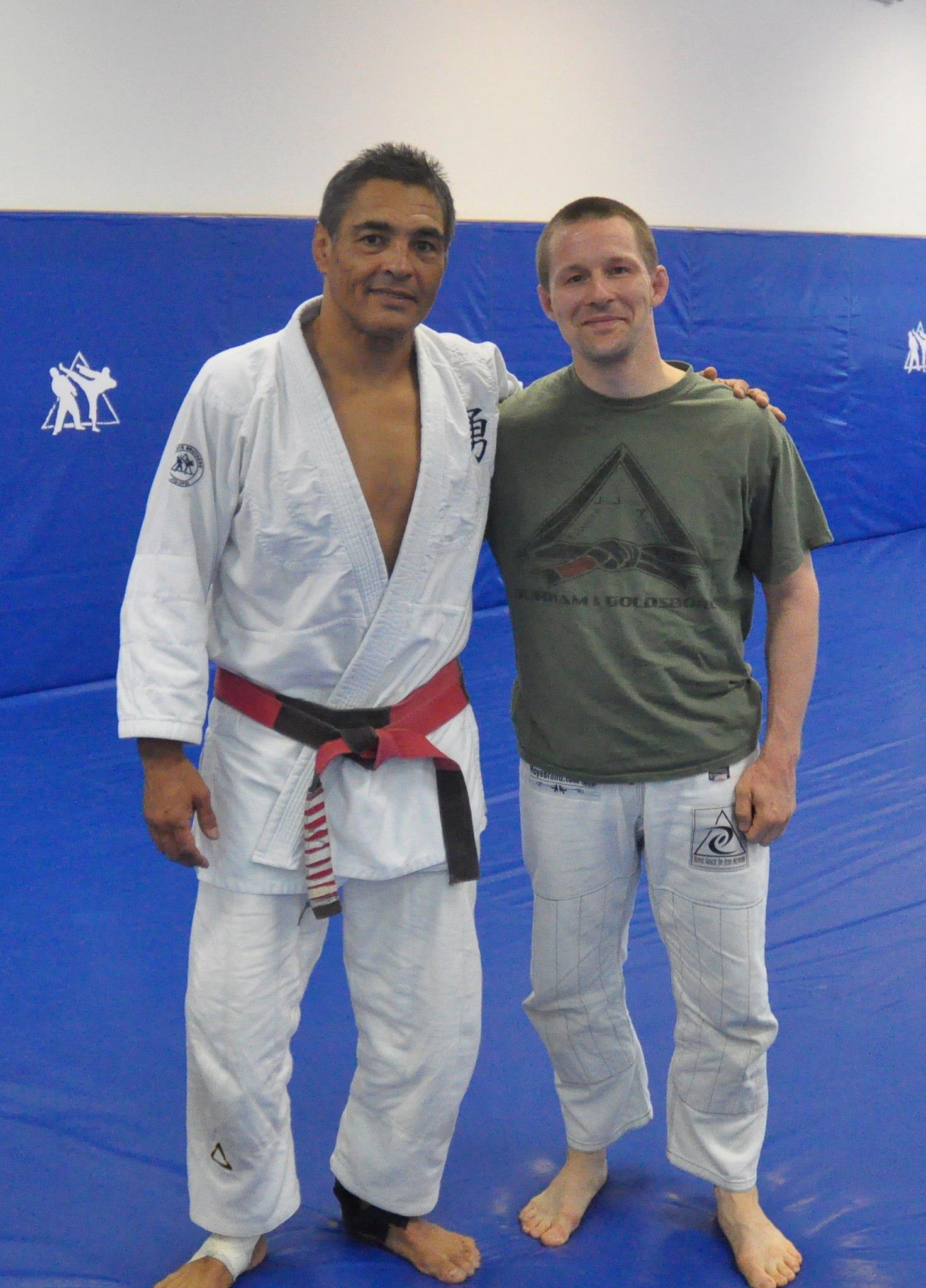
What was that happiest moment, and why was it a surprise? Well, I’ll get to that in a second. We all know jiu-jitsu can make you happier (and that post I just linked has great strategies for doing so). But the manner in which it does this varies from person to person.
Some highlights are common, obvious even. After I decided I was going to devote a lot of time to jiu-jitsu, competition became a priority for me. At white and blue belt, I entered a ton of tournaments, trying both to get wins and improve as fast as I could. I’ve lost a lot of jiu-jitsu matches, which means I’ve also won a fair amount of jiu-jitsu matches, and some of those wins tasted pretty sweet.
I’ve never been overly focused on belt promotion — I’m a huge believer in “keep your head down and train hard, and that stuff will take care of itself” — but when I got promoted to blue and especially purple, those were great days as well.
Those are common highlight-reel moments for just about everyone, I think. If you’re at the right gym, you probably also have some great memories of camaraderie on road trips or during post-training bonding sessions.
When I read Andrew Smith’s article about happiness in BJJ and thought about the singular moment that made me happiest, though, I didn’t think about any medal or even the day I got my purple belt. I flashed on an otherwise banal moment.
That morning, I’d been teaching the 6 a.m. fundamentals class. A white belt expressed to me that he’d never been able to hit the basic hip bump sweep I was showing, so I offered details on a setup that had helped me out.
During the night class, he showed up again. I was watching him roll with another white belt, and he saw the chance to use the setup. I swear his eyes got as big as dinner plates. The guy actually looked over and said my name as he set the technique up, like he was whispering “watch this!”
He hit for the first time and I have never seen a person smile so big. But that might only be true because there wasn’t a mirror in the room.
It was a super-basic technique and an inconsequential gym roll, but that moment stands out to me for some reason. I finally got some small version of what my instructor must feel regularly.
Why is this? I honestly couldn’t tell you. Some combination of the sheer joy on his face, the direct line between teaching the setup and seeing it work in a few short hours, perhaps. Also, I’ve achieved a lot of my competition goals, which means I generally compete for fun and view those tournaments as an extension of my training. The more I teach, the more I improve at it and the more fun I have.
I started training when I was 36, so long-term I always knew that teaching was a more sustainable path for me than competing full-time. Competition is still something I enjoy a lot, and I still train as hard for competition as I ever have.
Maybe this is part of a mental transition where other “wins” are becoming as important to me — or even more so. Roy Marsh once told me that, in his view, a purple belt absolutely should be able to teach. I’m finding that this is certainly part of the growth curve for me.
There’s something deeply gratifying to me about helping somebody else achieve their goals. Being useful to others in that way, I’m coming to understand, is a critical part of my own goals, too.
How about you? What are your happiest moments in jiu-jitsu?
